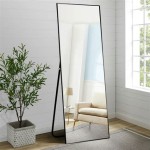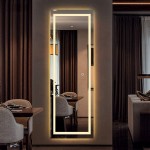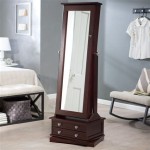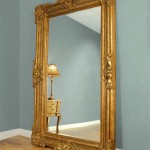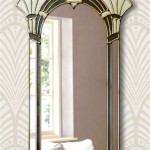Why Concave Mirrors are Used in Car Headlights
The incorporation of concave mirrors within car headlights is a deliberate engineering design choice, predicated on the principles of geometrical optics. This application leverages the specific properties of concave mirrors to efficiently manipulate and direct light, providing optimal illumination for driving conditions. Understanding the underlying physics explains why this configuration is preferred over other reflective surfaces like plane or convex mirrors.
The primary function of a car headlight is to provide visibility during nighttime driving or in low-light conditions. Effective headlights must generate a beam of light intense enough to illuminate the road ahead, while also distributing the light in a controlled manner to avoid blinding oncoming drivers. The shape and reflective characteristics of the mirror play a crucial role in achieving this balance of illumination and safety. The selection of a concave mirror, specifically a parabolic reflector, is the consequence of its unique ability to focus light emanating from a single point source into a parallel beam.
A parabolic reflector takes the shape of a paraboloid of revolution, which is formed when a parabola is rotated around its axis of symmetry. This shape is geometrically defined by a point called the focus. Any light ray originating from the focus and striking the surface of the parabolic reflector will be reflected parallel to the axis of symmetry. This principle is the cornerstone of how concave mirrors function within car headlights. The light source, typically a bulb or LED, is positioned at or near the focal point of the parabolic reflector. As light is emitted from this source, it strikes the concave mirror and is reflected outwards in a near-parallel configuration, creating a focused beam that extends forward.
Creating a Parallel Beam of Light
The most significant advantage of employing a concave mirror in a car headlight lies in its capacity to produce a near-parallel beam of light. This directionality is critical for projecting light over a considerable distance, allowing drivers to see objects and hazards far down the road. A parallel beam minimizes the dispersion of light, concentrating the luminous energy in a specific direction. If a plane mirror were used instead, the light would simply be reflected at an angle equal to the angle of incidence, resulting in a highly divergent beam that spreads out rapidly and loses intensity over distance. A convex mirror would further exacerbate this divergence, making it entirely unsuitable for headlight applications.
The ability to create a parallel beam stems directly from the geometry of the parabolic reflector. Each point on the reflector's surface is oriented in such a way that it reflects incoming light rays originating from the focus into parallel paths. This precise alignment ensures that the reflected light rays travel together in a cohesive beam, maximizing the distance they can travel and the area they can illuminate. The degree to which the beam is truly parallel depends on the accuracy of the parabolic shape and the precision with which the light source is positioned at the focal point. Manufacturing tolerances and variations in bulb placement can introduce slight imperfections, leading to some divergence in the beam. However, the overall effect is still a significantly more focused and directed light output than would be achievable with other types of reflectors.
The focused beam produced by a concave mirror is not perfectly parallel in real-world applications because the light source itself is not a perfect point source. Light emitting diode (LED) and incandescent bulbs, while relatively small, still have a finite size. This means that light rays are emitted from slightly different positions around the focal point, leading to minor variations in the angles of reflection. Furthermore, the surface of the concave mirror itself may have imperfections, such as slight deviations from the ideal parabolic shape. These imperfections can further contribute to beam divergence.
Engineers mitigate the effect of these imperfections through careful design and manufacturing processes. The shape of the reflector is optimized to minimize aberrations, and the light source is carefully positioned to maximize the parallelism of the beam. Additional optical elements, such as lenses and reflectors, can be added to further shape and control the light output. These elements can help to correct for any remaining imperfections and ensure that the headlight provides optimal illumination for drivers.
Efficient Light Collection and Reflection
Concave mirrors not only direct light effectively but also collect a significant portion of the light emitted by the bulb or LED. Light emitted from the bulb radiates in all directions. Without a reflector, a large percentage of this light would be lost, wasted in directions that do not contribute to illuminating the road ahead. The concave mirror, however, intercepts much of this scattered light and redirects it forward. This increases the overall efficiency of the headlight, allowing for a brighter and more useful beam with a given power input.
The reflective coating applied to the surface of the concave mirror further enhances its efficiency. This coating is typically made of a highly reflective material, such as aluminum or silver, which is deposited onto the mirror surface through a process like vacuum metallization. The reflective coating reflects a high percentage of the incident light (often more than 90%), minimizing the amount of light that is absorbed or scattered by the mirror itself. This ensures that the light is redirected forward with minimal loss, further maximizing the brightness and intensity of the headlight beam.
The overall efficiency of the headlight system is a crucial consideration in automotive design. A more efficient headlight requires less power to produce a given level of illumination, which can translate into fuel savings and reduced emissions. Furthermore, a more efficient headlight can operate at a lower temperature, which can extend the lifespan of the bulb or LED and reduce the risk of overheating or damage to the headlight assembly. The combination of the concave mirror's ability to collect and redirect light, coupled with the high reflectivity of its surface coating, makes it an essential component in achieving high headlight efficiency.
Beyond the basic parabolic reflector, many modern car headlights incorporate more complex optical designs to further improve light distribution and control. These designs may include multiple reflectors with different shapes and orientations, lenses to focus and shape the beam, and shields to block light from shining upwards and blinding oncoming drivers. These advanced optical elements work in conjunction with the concave mirror to create a headlight system that provides a highly targeted and efficient beam of light.
Adaptive headlight systems, which are becoming increasingly common in modern vehicles, further leverage the principles of geometrical optics to optimize light output in response to changing driving conditions. These systems use sensors to detect the vehicle's speed, steering angle, and the presence of other vehicles on the road. Based on this data, the system can adjust the direction and intensity of the headlight beam to provide optimal illumination for the current situation. For example, the system might steer the headlights around curves to improve visibility, dim the headlights when approaching oncoming traffic to avoid glare, or automatically switch between low and high beams as needed.
Controlled Light Distribution and Reduced Glare
Beyond simply creating a bright, forward-projected beam, concave mirrors, in conjunction with other optical elements, are essential for controlling the distribution of light and minimizing glare for oncoming drivers. A simple, unshielded parabolic reflector would produce a beam that is too intense and focused, creating a significant amount of glare that could temporarily blind other drivers. The design of car headlights must therefore incorporate mechanisms to diffuse and shape the light beam, ensuring that it illuminates the road effectively without causing excessive glare.
One common method for controlling light distribution is to use a multifaceted reflector. Instead of a perfectly smooth parabolic surface, the reflector is divided into a series of small, precisely angled facets. Each facet reflects light in a slightly different direction, which helps to spread out the beam and reduce its intensity. By carefully designing the shape and orientation of each facet, engineers can create a headlight system that provides a more uniform and controlled distribution of light.
Another technique for reducing glare is to use a shield or cutoff to block light from shining upwards. This shield is typically positioned in front of the bulb or LED, blocking the upper portion of the light beam. This prevents light from shining directly into the eyes of oncoming drivers, significantly reducing the amount of glare they experience. The shape and position of the shield are carefully designed to provide a sharp cutoff between the illuminated area and the dark area above, ensuring maximum visibility without excessive glare.
The European ECE regulations and the North American SAE standards dictate the specific requirements for headlight beam patterns. These regulations specify the minimum and maximum intensities of light at various points in the beam, as well as the maximum amount of glare that is allowed. Car manufacturers must design their headlight systems to comply with these regulations to ensure that their vehicles are safe and legal to operate on the road. The use of concave mirrors, in conjunction with other optical elements and glare control mechanisms, is essential for meeting these stringent requirements.
In recent years, LED headlights have become increasingly popular in the automotive industry. LEDs offer several advantages over traditional halogen and incandescent bulbs, including higher efficiency, longer lifespan, and greater design flexibility. While LED headlights still rely on concave reflectors to direct and focus light, the smaller size and higher intensity of LEDs allow for more complex and sophisticated optical designs. For example, some LED headlights use multiple LEDs with individual reflectors and lenses, allowing for greater control over the shape and direction of the beam. Adaptive driving beam (ADB) systems, which selectively dim or turn off individual LEDs to avoid glare while still providing optimal illumination, are another example of the advanced capabilities enabled by LED technology.
The development of car headlights is an ongoing process, driven by the desire to improve visibility, safety, and energy efficiency. While the fundamental principles of geometrical optics remain the same, new materials, manufacturing techniques, and optical designs are constantly being developed to optimize headlight performance. Concave mirrors, in their various forms, will likely continue to play a central role in car headlight technology for the foreseeable future, providing a reliable and efficient means of directing and controlling light for safe driving.

Car Headlights

How A Concave Mirror Is Used In Headlights And Searchlights To Throw Light At Long Distance Homework Study Com
Flashlights And Car Headlights All Have Concave Mirrors Why Would It Not Be A Good Idea To Use Convex Mirror Instead Quora

Which Mirror Is Used In The Headlights Of A Car

Which Type Of Mirror Is Used In Headlights Vehicles
Which Mirror Is Used In The Headlight Of A Car Quora

Why Concave Mirror Is Used In Torch Headlight Of Car Shorts Anjus Science

Why Concave Mirror Used In Headlights Brainly
Why Do We Use A Concave Mirror In Car Headlights Quora

State The Type Of Mirrors Used For I Headlights And Ii Rearview In Cars Motorcycles Give Reason To Justify Your Answer Each Case


